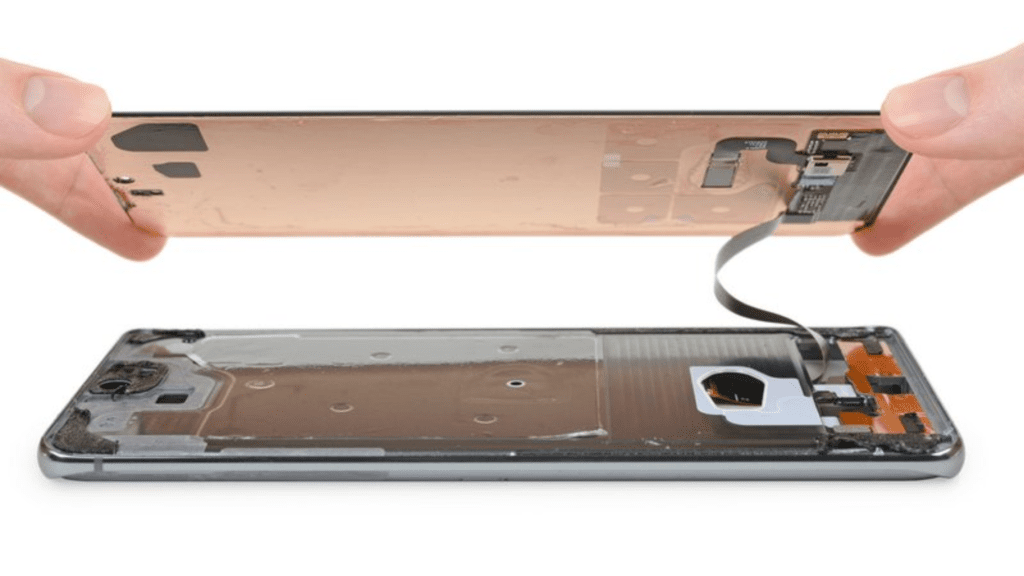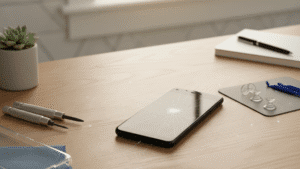A frozen or unresponsive touchscreen on your Samsung device can be incredibly frustrating—especially when you rely on your phone or tablet for work, navigation, or just staying connected. Whether it’s a minor software glitch or a sign of a deeper hardware issue, you don’t always need to run to the service center right away. In many cases, you can fix a Samsung touchscreen that’s not working with a few smart and simple steps.
Here are the top 10 solutions to fix an unresponsive Samsung touchscreen that can help bring your device back to life.
1. Restart Your Samsung Device
It may sound basic, but a simple restart can resolve a surprising number of issues. If your Samsung screen is not responding to touch, hold down the power and volume down buttons simultaneously for about 10 seconds until the device restarts. This clears temporary glitches or background app crashes that may be freezing your screen.
If your touchscreen doesn’t let you interact at all, try a force restart, which doesn’t require touchscreen input.
2. Remove the Screen Protector or Case
Sometimes, the culprit is not the touchscreen itself—but what’s covering it. Cheap or improperly applied screen protectors can interfere with touch sensitivity, especially at the edges. Try removing your screen protector or case and see if that restores functionality.
For Samsung Galaxy devices with edge displays or higher screen sensitivity settings, using low-quality protectors can significantly affect usability.
3. Boot into Safe Mode
Third-party apps can sometimes interfere with the touchscreen. To rule this out, try booting into Safe Mode, which temporarily disables all downloaded apps.
How to do it:
- Press and hold the Power button until the Samsung logo appears.
- Release the Power button and hold the Volume Down button.
- Once the device starts, you’ll see Safe Mode at the bottom of the screen.
If your touchscreen works in Safe Mode, a recently installed app may be to blame. Uninstall apps one by one to identify the culprit.
4. Clear System Cache
Corrupted cache files can cause touchscreen lag or unresponsiveness. Wiping the system cache helps refresh your device without deleting personal data.
Steps:
- Power off your device.
- Press and hold Power + Volume Up + Bixby (if available) buttons.
- Once the Android logo appears, release all buttons.
- Use volume buttons to navigate to Wipe Cache Partition and confirm with the Power button.
After restarting, check if the touchscreen is responsive again.
5. Check for Software Updates
Outdated software can cause touchscreen malfunctions. Samsung frequently releases firmware updates to fix known bugs and improve device stability.
Go to:
Settings > Software Update > Download and Install
Installing the latest update may fix touchscreen-related bugs that you didn’t even know were there.
6. Free Up Storage Space
A full storage drive can slow down or even freeze your device, causing the touchscreen to lag or stop responding. Check your storage under:
Settings > Device Care > Storage
Delete unused apps, move photos to the cloud, and clear junk files. Freeing up space can significantly improve touchscreen responsiveness.
7. Enable Touch Sensitivity (for Screen Protectors)
If you’re using a screen protector and don’t want to remove it, Samsung provides a helpful feature called Touch Sensitivity that improves responsiveness.
Go to:
Settings > Display > Touch Sensitivity
Enable this option and test your screen again.
8. Run Samsung’s Built-in Diagnostics
Samsung provides a self-diagnosis tool through the Samsung Members app, which can detect touchscreen issues.
- Open the Samsung Members app.
- Tap on Get Help > Interactive Checks > Touch Screen.
The tool will guide you through a test and let you know if there’s a hardware issue.
9. Factory Reset as a Last Resort
If none of the above methods work, and you’re sure it’s not a hardware issue, you may need to factory reset your Samsung device. This erases all data and resets your phone or tablet to default settings.
Important: Backup your data before proceeding.
Steps:
- Go to Settings > General Management > Reset > Factory Data Reset
- Follow the on-screen instructions.
If the issue persists after a factory reset, you may be dealing with a hardware problem.
10. Seek Professional Samsung Tab Repair
If your Samsung touchscreen is still not working after all the above steps, it’s time to consult the professionals. Hardware issues like a damaged digitizer, water exposure, or screen flex cable faults can cause touchscreen problems that software fixes won’t solve.
At this point, it’s best not to DIY your way through the repair unless you have experience handling mobile hardware. Instead, bring your device to a trusted Samsung Tab Repair technician who can diagnose and fix the issue safely.
When to Visit a Repair Centre?
You should consult a technician immediately if:
- The touchscreen is partially responsive (some areas work, others don’t)
- There are visible cracks or internal screen bleeding
- The device overheats or drains battery abnormally
- There was recent water damage
In these cases, trying to fix it at home could worsen the damage.
Where to Get Reliable Samsung Screen Repairs?
If you’re in need of Samsung screen repair or Samsung Tab Repair, choosing a reliable and certified repair shop is crucial. Look for centers that:
- Use genuine Samsung parts
- Offer warranty on repair
- Provide quick turnaround times
- Have experienced technicians
Check out this Samsung Tab Repair Service page to learn more about professional help.
Final Thoughts
A non-responsive touchscreen doesn’t always mean your Samsung device is beyond repair. From simple restarts to in-depth system diagnostics, many solutions are within your reach. However, it’s also important to know when it’s time to seek expert help—especially when it comes to hardware-related issues.
For fast, reliable, and expert-level service, trust Digimob Phone Repair. With years of experience handling all types of Samsung device issues, from minor glitches to major screen replacements, they’ve got you covered with genuine parts and top-tier service.



